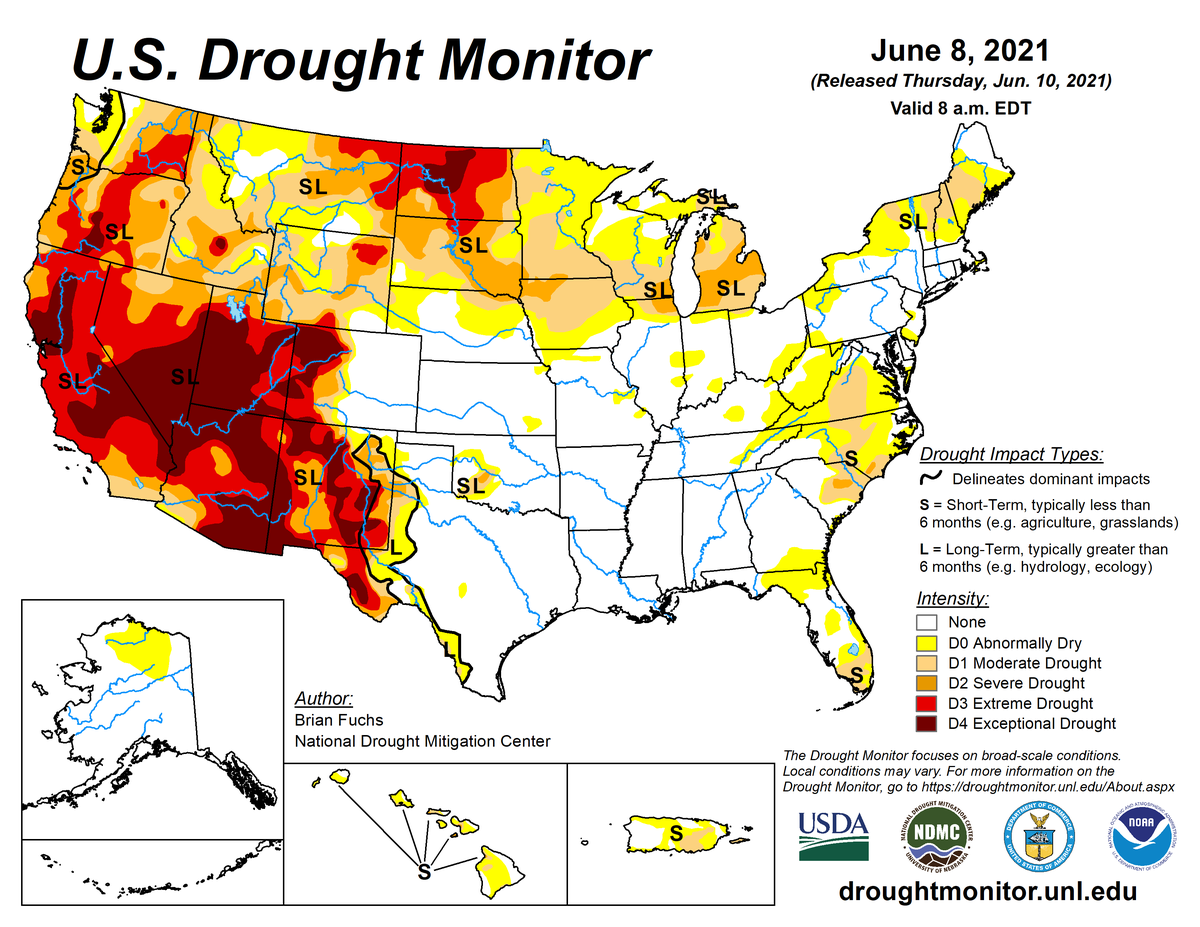
I mentioned drought among the top climate and weather stories of 2020. It did not go away, as Western drought "the worst we have ever seen," says CBS News' Jeff Berardelli.
As CBS News' Mola Lenghi reports, drought conditions in the Western U.S. are historic and point to what could be a catastrophic wildfire season. CBS News meteorologist and climate specialist Jeff Berardelli then joins CBSN's Elaine Quijano with more.While this video started off as a weather story about this week's heat wave, Jeff Berardelli put it in context as a climate story that carries all kinds of risk. In addition to appreciating the connection, I think this video from CBS News has the best preview image for this entry. I am not above arranging the videos for my posts on that criterion. (ETA: That didn't work, so I added the image from NOAA.)
The drought in the Western U.S. has been building for years, if not decades. Follow over the jump for that story as well as an update on the situation.
PBS Terra described the current conditions as The Worst Drought in 1200 Years: What Does it Mean for Your Food?
The Colorado Basin provides water to over 40 million people in 7 US states and it is currently experiencing its worst drought in 1200 years! But unlike other droughts, our actions may have real impacts on the outcome and it’s very likely that we can make things better.Calling this "the worst drought in 1200 years" and the process "aridification" instead of a mere drought reminds me of something I said in the interview I linked to in On BlogTalkRadio for Earth Day today.* I told host John Henry that I thought that the drought was comparable to the once-in-a-lifetime one that caused the Dust Bowl but it could be worse. The current drought could rival the ones that occurred in the U.S. Southwest during the mid 1100s and late 1200s, during which time the Anasazi, the ancestors of today's Hopi, who were featured in the PBS Terra video, abandoned many of their previous settlements and started building their current pueblos. I'd listen to the descendants of the survivors of that drought about how to cope with it.
Based on current projections scientists are using terms like “aridification” to describe it, meaning that, if we don’t change course things may not go back to normal for a very long time. How is this “hot drought” different from those that have visited the region before? How are climate change and warming temperatures driving these changes? And what can we do to adapt? Watch this episode of Weathered to find out.
PBS Terra uploaded the previous video last December. PBS NewsHour reported 2021 could be one of the driest years in a millennium, and there's no relief in sight late last month.
Nearly half of the country — from the Pacific coast to the Great Plains and upper Midwest — is experiencing moderate to exceptional drought conditions. That's expected to get worse throughout the summer. As William Brangham reports, it's the western states in particular that are taking the hardest hit, and the possibilities for devastating wildfires are at an all-time high.Two days ago, ABC News reported California drought has reservoirs at critically low levels showing that the situation has indeed deteriorated.
ABC News’ Zohreen Shah reports on climate change fueling dire drought conditions in California, drying up reservoirs critical to California residents.This looks like a story that will continue to worsen throughout the summer and fall. Expect more entries about water shortages and especially fires this year, along with hurricanes, which NOAA predicted will be another very active one. In the meantime, stay tuned for the 2019-2020 Golden Coffee Cups television nominees as the Sunday entertainment feature.
*Unfortunately, the interview itself is no longer available. Clicking the link gives a 404 result so you can't actually hear me say this. Sigh.
No comments:
Post a Comment